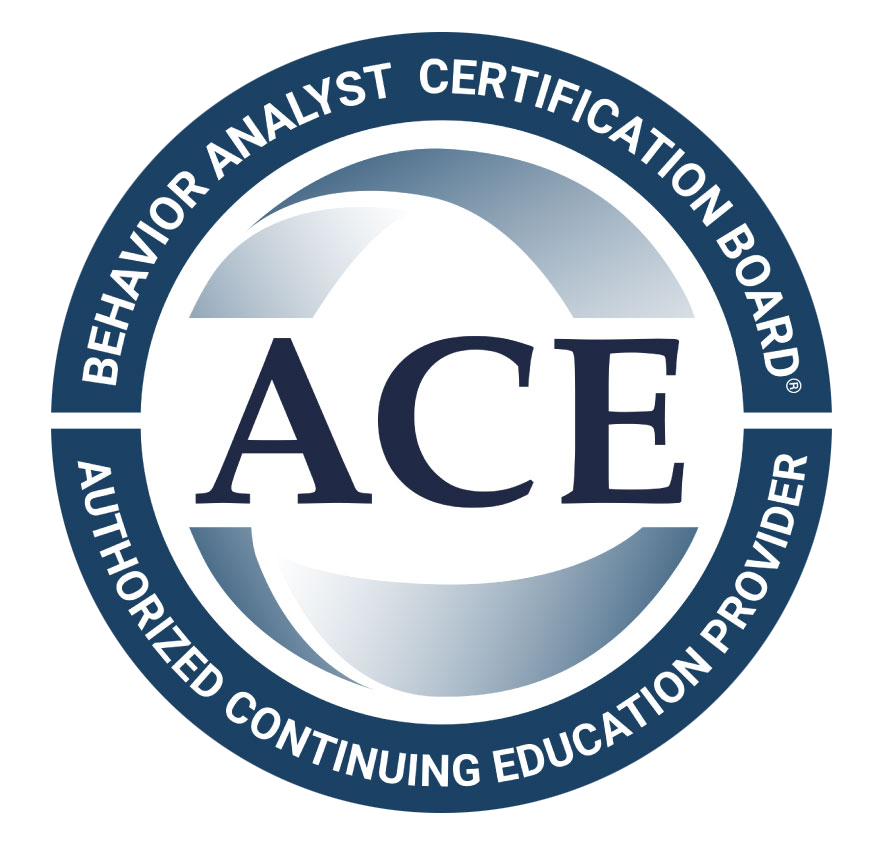School-Based ABA Therapy Overview
School-based ABA therapy can significantly improve educational outcomes for students with Autism Spectrum Disorder (ASD) and other related conditions. Understanding its impact and benefits is essential for parents, educators, and ABA professionals.
Impact of ABA Therapy in Schools
Implementing Applied Behavior Analysis (ABA) therapy in school settings can have a profound impact on students with ASD. ABA therapy helps create a structured and supportive learning environment, which is crucial for promoting independence, enhancing student engagement, and facilitating positive outcomes. Key aspects of the impact include:
- Improved Educational Outcomes:
ABA therapy can lead to significant improvements in academic performance and social skills.
- Behavioral Improvements:
A structured environment promotes positive behavior, reduces anxiety, and helps students adhere to clear guidelines and routines.
- Enhanced Student Engagement: Tailored interventions help keep students on task and actively participating in classroom activities.
Benefits of School-Based ABA
The benefits of integrating ABA therapy within school settings go beyond behavioral improvements. Here are some key advantages:
- Legal Mandates:
Under the Individuals with Disabilities Education Act (IDEA), public schools are required to provide services such as ABA therapy if it is necessary to support a student with a disability.
- Structured Learning Environments: The use of ABA techniques such as Discrete Trial Teaching (DTT), Naturalistic Teaching, Pivotal Response Treatment (PRT), Token Economy, and Peer-mediated Interventions create a structured educational environment that supports learning and reduces stress.
- Positive Classroom Climate: By employing ABA strategies, schools can foster a positive atmosphere conducive to learning for students with ASD.
| Benefit | Description |
|---|---|
| Improved Outcomes | Enhanced academic performance and social skills for students with ASD. |
| Legal Requirements | Schools must provide necessary services to support students with disabilities, including ABA therapy. |
| Structured Environment | Clear guidelines, routines, and visual aids help reduce student anxiety. |
| Positive Behavior | Promotes desirable behaviors and reduces problematic ones through consistent reinforcement. |
By focusing on the impact and benefits of ABA therapy in school settings, educators, parents, and professionals can better understand the importance of these interventions. For more insights and practical advice, explore our resources on ABA therapy in schools and school-based behavior intervention.
Training and Support
In the realm of school ABA therapy services, robust training and support structures are essential for successful implementation. This section will discuss educator training in Applied Behavior Analysis (ABA) and the importance of consultation with ABA therapists.
Educator Training in ABA
Training programs for teachers in ABA focus on evidence-based practices that enhance learning, behavior, and social skills among students with autism spectrum disorder (ASD). Educators equipped with these techniques can effectively support students with various needs, including those with ADHD and language impairments.
Key areas covered in educator training:
- Behavior Intervention Plans (BIPs)
Educators learn to implement tailored BIPs developed collaboratively with ABA therapists, ensuring alignment with each student's educational and behavioral goals. - ABA Teaching Strategies
Training programs introduce teachers to common ABA strategies such as Discrete Trial Teaching (DTT), Naturalistic Teaching, Pivotal Response Treatment (PRT), Token Economy, and Peer-Mediated Interventions. - Data Collection and Analysis
Educators are trained to utilize data-driven decision-making processes to track student progress and adjust interventions as needed.
ABA Therapist Consultation
ABA therapists play a critical role in school settings, providing essential support through assessments, goal development, and direct intervention.
Key roles of ABA therapists in schools:
- Assessment and Goal Development
ABA therapists conduct comprehensive assessments to identify each student's unique needs and develop individualized goals and interventions. This ensures that every student receives tailored support to improve their academic and social skills. - Behavior Intervention Plans (BIPs)
Collaboration between educators and Board Certified Behavior Analysts (BCBAs) results in effective behavior intervention plans tailored to the specific needs of each student. - Direct Instruction and Peer Interaction
ABA therapists provide direct instruction on academic skills and support students through peer interactions, which is crucial for social development.
By investing in educator training in ABA and ensuring ongoing consultation with ABA therapists, schools can create an inclusive and supportive environment that maximizes the potential of students with autism and related conditions. For further details on tailored interventions and evidence-based strategies, explore our section on individualized interventions.
Implementing ABA in School Settings
Implementing Applied Behavior Analysis (ABA) therapy in school settings has significant potential to enhance the educational experiences of students with Autism Spectrum Disorder (ASD) and related conditions. Effective implementation involves creating supportive environments and utilizing structured learning approaches.
Creating Supportive Environments
A structured and supportive learning environment is crucial for promoting independence, student engagement, and positive outcomes for students on the autism spectrum. Creating these environments can be achieved through several strategies:
- Physical Arrangement:
Organizing the physical space to minimize distractions and provide clear boundaries.
- Visual Supports:
Using visual schedules, cues, and prompts to guide students and clarify expectations.
- Consistent Routines:
Implementing structured routines to help students navigate their daily academic activities effectively.
- Positive Reinforcement: Applying positive reinforcement to encourage desirable behaviors and enhance motivation.
The goal is to create an environment where students feel safe and supported, which fosters their ability to learn and interact with peers.
Structured Learning Approaches
Structured learning approaches within ABA therapy focus on developing essential skills that are vital for academic success. These approaches include:
- Discrete Trial Training (DTT):
Breaking down skills into smaller, manageable components and teaching each component through repeated trials.
- Natural Environment Training (NET):
Utilizing natural settings to teach skills through play and everyday activities.
- Task Analysis:
Breaking down complex tasks into smaller steps and teaching each step sequentially.
- Incidental Teaching: Capitalizing on naturally occurring opportunities to teach and reinforce skills within the student's daily routine.
These techniques are designed to help children develop communication skills, social interaction abilities, and behavioral self-regulation, which are essential for navigating academic routines and peer interactions.
Example of a Structured Learning Approach Table:
| Approach | Key Focus | Example Implementation |
|---|---|---|
| Discrete Trial Training | Skill Acquisition | Teaching a child to recognize letters |
| Natural Environment Training | Generalization of Skills | Using snack time to reinforce requesting skills |
| Task Analysis | Step-by-Step Learning | Breaking down handwashing into individual steps |
| Incidental Teaching | Spontaneous Learning Opportunities | Reinforcing polite requests during playtime |
Implementing these structured approaches within a supportive environment provides a comprehensive framework for school-based ABA therapy, promoting success for students with ASD.
For further details on related strategies and techniques, readers can explore our article on school-based ABA therapy techniques.
Individualized Interventions
Individualized interventions are a cornerstone of school aba therapy services. This section will discuss the use of tailored behavior plans and evidence-based strategies to meet the unique needs of each student.
Tailored Behavior Plans
Tailored behavior plans are crucial for addressing the specific needs of students with Autism Spectrum Disorder (ASD). These plans are designed to target individual behavioral challenges and skill deficits. By focusing on each student's unique strengths and areas for improvement, tailored behavior plans facilitate optimal learning outcomes. Their primary aim is to promote positive behaviors while reducing or eliminating maladaptive ones.
| Behavior Plan Components | Description |
|---|---|
| Target Behaviors | Specific behaviors that need intervention |
| Interventions | Strategies to encourage positive behavior |
| Reinforcements | Rewards to motivate desirable behavior |
| Monitoring | systematic tracking of progress |
The behavior plans usually include:
- Target Behaviors:
Identifying specific behaviors that need intervention.
- Interventions:
Implementing strategies to encourage positive behaviors.
- Reinforcements:
Using rewards to motivate desirable behavior.
- Monitoring: Systematically tracking progress to adjust strategies as needed.
School-based behavior intervention plans help in creating a supportive learning environment by promoting consistency, predictability, and independence. They are an integral part of achieving academic, behavioral, and social success for students with autism.
Evidence-Based Strategies
Evidence-based strategies are foundational to the effectiveness of school-based ABA therapy techniques. These approaches rely on scientifically validated methods to improve learning, behavior, and social skills. Some key evidence-based strategies include:
- Discrete Trial Training (DTT):
Breaking down skills into small, manageable tasks.
- Prompting:
Using cues to assist the student in performing a desired behavior.
- Reinforcement:
Providing rewards to reinforce positive behavior.
- Task Analysis:
Decomposing complex activities into simpler steps.
- Social Skills Training: Teaching appropriate social interactions through practice and reinforcement.
| Strategy | Description |
|---|---|
| Discrete Trial Training (DTT) | Breaking down tasks into small, teachable units |
| Prompting | Providing cues to guide behavior |
| Reinforcement | Using rewards to encourage positive behavior |
| Task Analysis | Breaking down complex tasks into simpler steps |
| Social Skills Training | Teaching social interactions through practice |
The application of these evidence-based strategies supports consistent learning outcomes. They empower educators and therapists to create individualized teaching plans that enhance student engagement and promote independence.
School-Based ABA Strategies
Effective intervention strategies are essential for implementing successful school ABA therapy services. This section focuses on two key strategies: data-driven decision-making and peer interaction support.
Data-Driven Decision-Making
Data-driven decision-making is foundational in school-based ABA therapy. This approach relies on systematic data collection and analysis to inform and adjust intervention strategies, ensuring they are tailored to meet each student’s unique needs.
The steps typically involved in data-driven decision-making include:
- Identifying Target Behaviors:
Recognizing specific behaviors to be addressed.
- Collecting Baseline Data:
Gathering initial data to understand the current level of the target behavior.
- Implementing Interventions:
Applying evidence-based strategies.
- Monitoring Progress:
Continuously tracking behavior changes over time.
- Analyzing Data:
Reviewing data to assess the effectiveness of interventions.
- Adjusting Interventions: Modifying strategies based on data analysis to optimize outcomes.
| Step | Description |
|---|---|
| Identifying Target Behaviors | Recognize specific behaviors to be addressed |
| Collecting Baseline Data | Gather initial data on target behavior |
| Implementing Interventions | Apply evidence-based strategies |
| Monitoring Progress | Track behavioral changes |
| Analyzing Data | Assess effectiveness of interventions |
| Adjusting Interventions | Modify strategies based on data |
Data collection tools may include frequency counts, duration records, and interval sampling, all aimed at capturing a comprehensive picture of the student’s progress. Utilizing data helps in creating individualized behavior plans and implementing school-based behavior intervention techniques that are both effective and tailored to the student's unique learning and behavioral needs.
Peer Interaction Support
Supporting peer interactions is another pivotal element of ABA therapy, which can significantly enhance social skills and emotional regulation for students with autism. Effective support strategies include:
- Structured Group Activities:
Encouraging participation in group tasks to foster social engagement.
- Peer Buddy Systems:
Pairing students with supportive peers.
- Social Skills Training:
Explicitly teaching communication and interaction skills.
- Positive Reinforcement: Rewarding appropriate social behaviors to encourage repetition.
- Visual Supports: Using visual aids like social stories to guide social interactions.
By incorporating these strategies, educators and ABA therapists can create a supportive and inclusive environment that promotes positive peer interactions. This, in turn, can lead to improved social outcomes and emotional well-being for students with autism.
Utilizing data-driven decision-making and peer interaction support as part of school-based ABA therapy programs ensures a structured approach to addressing the unique challenges faced by students with autism spectrum disorder. Together, these strategies contribute to creating an environment where students can thrive academically and socially.
Collaboration and Partnership
Effective collaboration and partnership are fundamental to the success of school-based ABA therapy services. In this section, we explore the roles of school staff, ABA providers, and parents in creating a cohesive and supportive environment for students with autism spectrum disorder (ASD).
School Staff and ABA Providers
The collaboration between school staff and ABA providers ensures that the therapeutic interventions are seamlessly integrated into the student’s daily routine. By working together, educators and ABA therapists can create a consistent and structured environment that promotes positive outcomes.
- Shared Training and Knowledge:
Training programs for teachers in Applied Behavior Analysis (ABA) focus on improving learning, behavior, and social skills in students with autism. When educators are trained in evidence-based practices, they are better equipped to support the goals set by ABA therapists.
- Regular Communication:
Frequent meetings between school staff and ABA providers are essential for discussing student progress and adjusting behavior plans as necessary. This open line of communication helps ensure that everyone involved is on the same page and working towards the same goals.
- Environment Structuring: A structured environment is crucial for promoting positive behavior in classrooms. Clear guidelines, visual aids, and defined routines help reduce anxiety and improve focus for students with ASD.
Parental Involvement Benefits
Parent involvement in ABA therapy is critical for reinforcing positive behaviors and ensuring consistency between home and school settings.
- Consistent Reinforcement:
When parents actively participate in their child’s ABA therapy program, they can continue to reinforce the skills learned at school at home. This consistency helps solidify the behavior changes and promotes generalization of skills across different environments.
- Enhanced Communication:
Regular updates from ABA providers and school staff keep parents informed about their child’s progress. This communication allows parents to provide valuable feedback and make necessary adjustments to the behavior plans.
- Empowerment and Support: Educating parents about ABA strategies empowers them to effectively manage their child’s behaviors. This support network extends beyond the classroom, providing parents with the tools they need to confidently address challenges at home.
Collaborative efforts among school staff, ABA providers, and parents create a robust support system that enhances the effectiveness of ABA therapy in educational settings. This partnership ensures that students with autism receive comprehensive care tailored to their unique needs, ultimately leading to improved academic and social outcomes.
Measuring Success
Understanding the success of school ABA therapy services is essential for parents, therapists, and educators. This section focuses on the methods used to track progress and the indicators that signify effective therapy.
Progress Tracking Methods
Measuring the effectiveness of ABA therapy in schools involves several systematic progress tracking methods. Data-driven progress is crucial for monitoring the changes in targeted behaviors over time.
Tracking Metrics:
- Frequency: Logging how often a behavior occurs.
- Duration:
Measuring the amount of time a child exhibits a particular behavior.
- Intensity: Assessing the severity or force of the behavior.
These metrics provide detailed insights into behavioral trends and help in identifying areas that need more focus. Frequent data collection allows for timely adjustments to individualized behavior plans.
Indicators of Effective Therapy
Several indicators signify that ABA therapy is being implemented effectively within the school setting. These indicators can guide parents, teachers, and therapists in evaluating the success of the therapy program.
- Positive Behavior Trends:
Continuous improvements in the frequency, duration, and intensity of targeted behaviors over time are key markers of effective therapy.
- Adaptive Behavior Gains:
Improvements in essential life skills such as communication, social interaction, and daily living activities reflect the benefits of ABA therapy. Enhanced adaptive behaviors significantly improve a child's quality of life.
- Parental Involvement:
The active participation and communication of parents with therapists indicate a well-conducted therapy program. Parental insights and feedback are crucial for making necessary adjustments to the therapy plan.
- Engagement Duration: The longevity of a child's engagement in ABA therapy often correlates with significant improvements. Consistent, long-term therapy tends to yield better outcomes.
SOURCES:
https://pmc.ncbi.nlm.nih.gov/articles/PMC9788712/
https://etd.ohiolink.edu/acprod/odb_etd/ws/send_file/send?accession=ysu1683233956307364&disposition=inline
https://pkservice.org/preparing-for-the-new-school-year-school-based-aba-therapy/
https://asatonline.org/research-treatment/clinical-corner/a-comparative-look-at-school-based-and-center-based-aba-programs/
https://scholarsarchive.byu.edu/cgi/viewcontent.cgi?article=11326&context=etd









